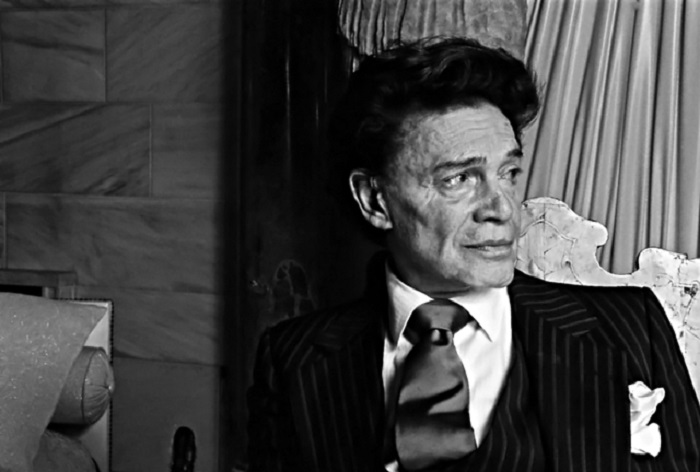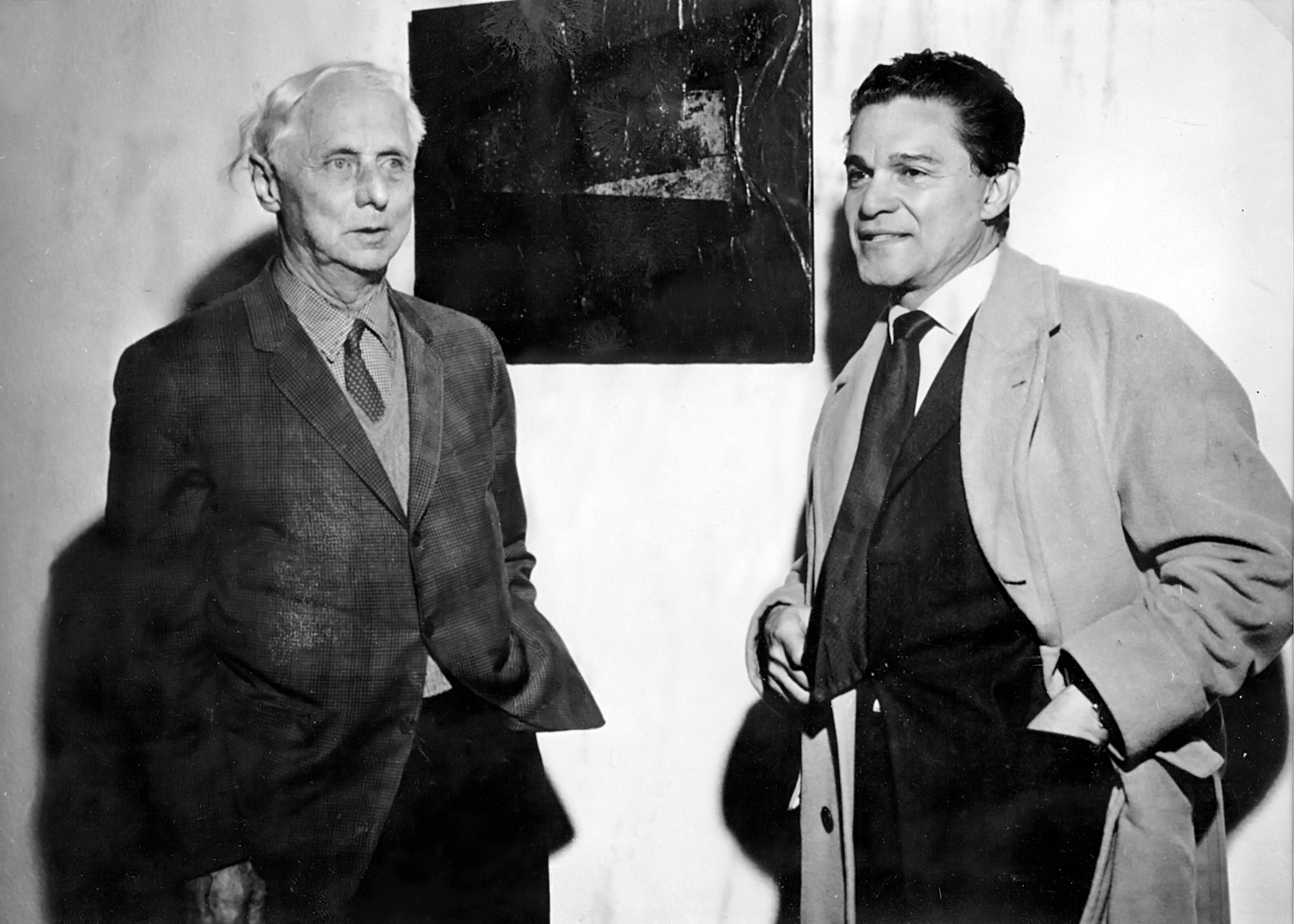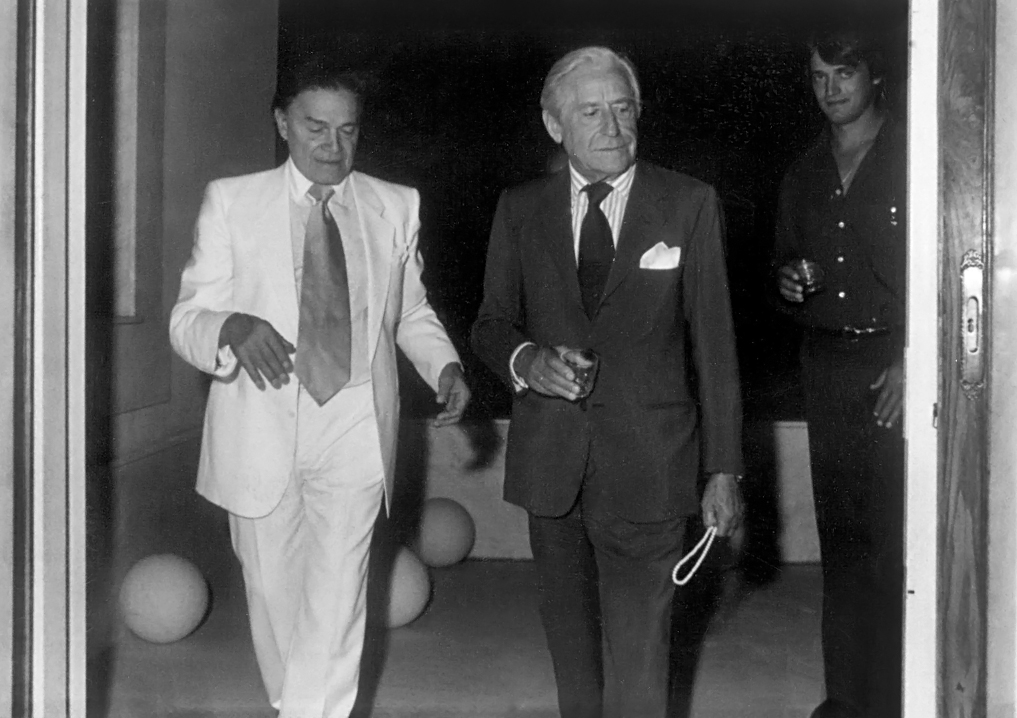
The turbulent life of the Greek-Alexandrian collector, who spent his life in Berlin, Paris, and New York became the stuff of legend. And unfortunately, so did his tragic demise after he decided to return to Greece, the homeland he loved so much.
The story of the famous gallery owner and art collector can now be found in the pages of a new biography with the title “Iolas,” written by Greek author, journalist and art consultant Nikolaos Stathoulis, which will soon be published also in English.
The book, edited by Kyriakos Pipinis, is based on several hours of recorded reminiscences and conversations between Alexandros Iolas and the author. Iolas also provided Stathoulis with unpublished photographs, personal correspondence, documents and files which had previously been completely unknown.
Stathoulis lived very close to Iolas and was chosen and commissioned by the collector to be his official biographer, under the terms of a specific letter dating back to December of 1985. The author presents the fascinating biography of the brilliant patron of the arts in all his complexity.
And because of the many vicissitudes of the collector’s turbulent life, it was a project which took decades to complete.

He came in contact with many visual artists in the French capital, even posing as a model for painter Giorgio de Chirico as well as photographer Herbert List.
After Paris, Koutsoudis moved to New York City, where he became a dancer with the George de Cuevas Company. While living in New York he met Theodora Roosevelt, a granddaughter of former U.S. President Theodore Roosevelt, who was also a dancer. They had a brief affair, during which the young woman urged him to change his name to Alexandros Iolas because of his birthplace.
Known as Iolas now, the Greek man was forced to abandon dancing after an accident he sustained in 1944, devoting himself thereafter entirely to the collecting of works of art.
The refined and handsome Greek man soon began socializing with artists such as Pablo Picasso, Jean Cocteau, Giorgio de Chirico, Georges Braque, Man Ray, Rene Magritte and Max Ernst. His good looks and vibrant personality made him naturally very popular in art circles.
Iolas then became the director of the Hugo Gallery, founded in 1944 by Robert Rothschild, Elizabeth Arden and Maria dei Principi Ruspoli Hugo, where Andy Warhol had his first solo exhibition in 1952.
In 1955 he founded the Jackson-Iolas Gallery with former dancer Brooks Jackson, and later opened and operated a chain of art galleries under his own name in New York, Paris, Milan, Rome, Geneva, Madrid and Athens.
Iolas represented a range of important artists in his galleries, including Andy Warhol, Rene Magritte, Roberto Matta, Ed Ruscha, Yves Klein, Jannis Kounellis, Takis, Victor Brauner, and Niki de Saint-Phalle.
His flamboyant personality made him a very popular figure among art buyers and he became a prominent member of the art world as well as the international jet set.
At the same time, Iolas also promoted important Greek artists abroad, including Costas Tsoklis, Nikos Hadjikyriakos-Ghikas, Yannis Tsarouchis, Giorgios Gounaropoulos, Takis and others, some of them becoming well-established overseas.
In the 1960s, after several visits back to Greece, he considered establishing a museum for modern Greek art in the capital city. This was when the jet-setting art dealer began building the villa which was destined to become so famous in the Athens suburb of Agia Paraskevi.
This turned out to be a veritable palace of 18,300 square feet, in which Iolas planned to house his own priceless collection of art and antiquities.
His dream of creating a museum for Greek contemporary art never materialized; however, Iolas sparked the founding of the Macedonian Museum of Contemporary Art in Thessaloniki, to which he donated a large number of pieces from his collection.
When the collector finally completed construction of his mansion in Agia Paraskevi, he brought over and installed his huge collection of antiquities, as well as Byzantine and modern art. His vast collections also included tapestries, furniture and other objects of great artistic and monetary value.
Marble walls, golden doors, ancient columns from Ravenna and as many as 10,000 works of art and antiquities of almost incalculable value decorated Iola’s villa. He clearly never intended for the villa to be simply his home, but a museum that would house both his works and his guests from the art world.
Iolas’ valuable art collection included works by Pablo Picasso, Salvador Dali, Giorgio de Chirico, Henri Matisse, Max Ernst and others, as well as notable works by Greek artists.
The villa all these treasures were housed in was like a palace in the Athenian suburbs. Designed by famous architects and decorated by artists, it became an artistic hotspot where famous dinners and parties took place, with the guests always prominent members of the art world and the international jet set, as well as politicians, writers, and fashion designers.
The parties Iolas held at his estate soon became the stuff of legend. At the same time, however, they were targeted by the yellow press, particularly the tabloid newspaper Avriani.
In 1983, the art collector gave an interview to Woman magazine in which he spoke badly of many of his friends, from painter Yannis Tsarouchis to politician Melina Merkouri, as well as other figures from the political sphere and art world in Greece.
Those in power never forgave him for this marked indiscretion – especially the press. After that interview, the “yellow” newspaper Avriani — which is no longer in publication — launched a ruthless attack against Iolas, criticizing his sexual preferences – he was openly gay – and his many excesses in life.
By that time, PASOK had been in power in Greece for two years, and the nation’s mood had changed, with Andreas Papandreou’s socialist rhetoric prevailing. Avriani, which fervently backed PASOK and its leader, found a convenient scapegoat in Iolas.
He was rich, eccentric and homosexual, all things that did not go well with the new, socialist Greece the newspaper was promoting. And the fact that he was friends with conservative former prime minister Constantine Karamanlis did not help either.
Slanderous reports on Iolas in Avriani portrayed him as an antiquities smuggler, a drug user, and even as a pedophile. Soon many Greeks chose to view the eccentric man as a menace to society who deserved to be not only ridiculed but even persecuted.
Iolas could not fight back against this onslaught, and, as his biographer wrote, the unfair and continuous “war” against him without question contributed to his demise. The art collector and high-flying jet set figure died of AIDS on June 8, 1987.
After his death, Iolas’ once-mythical estate was looted and vandalized, and his dream of donating his priceless art collection to the Greek state died with him.
See all the latest news from Greece and the world at Greekreporter.com. Contact our newsroom to report an update or send your story, photos and videos. Follow GR on Google News and subscribe here to our daily email!





